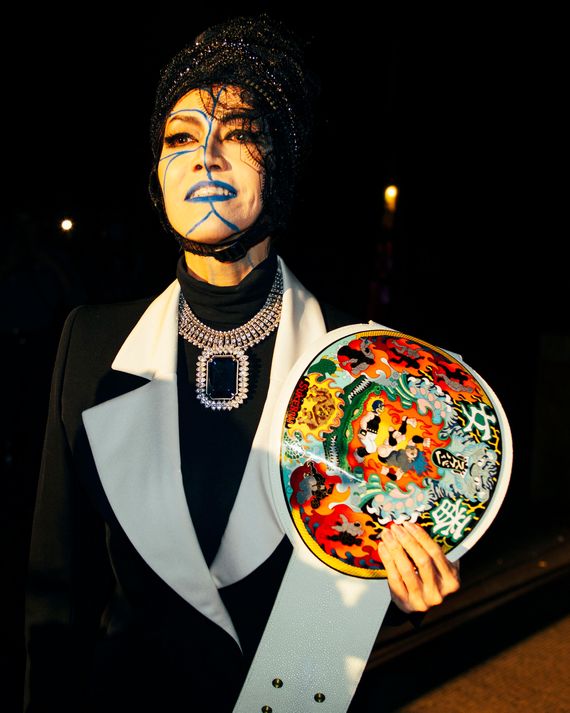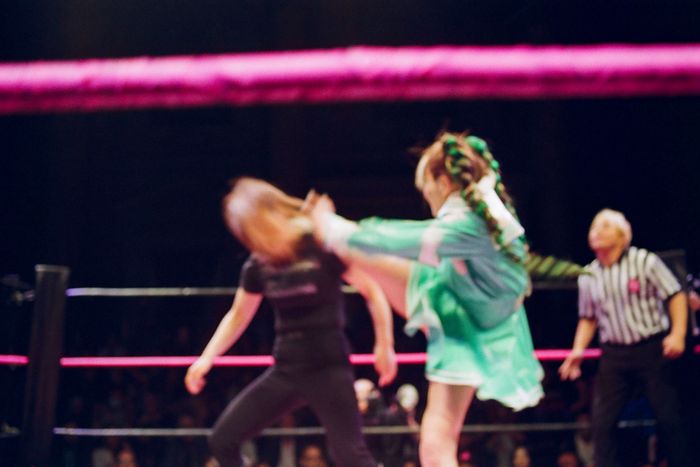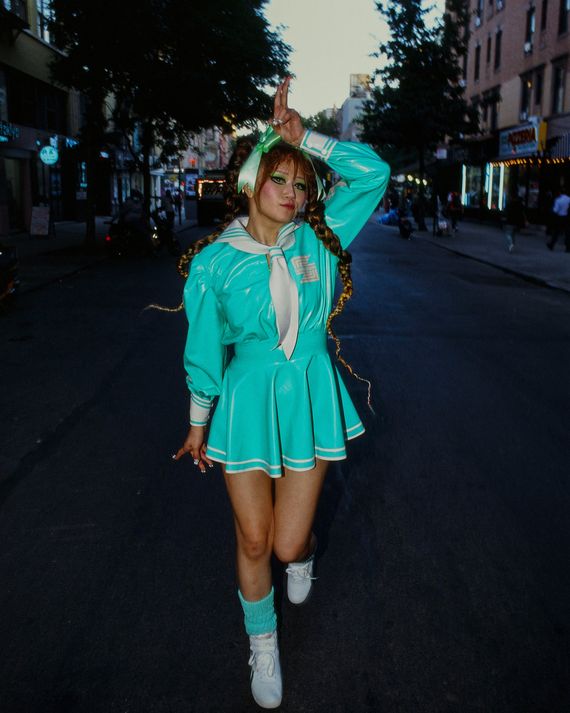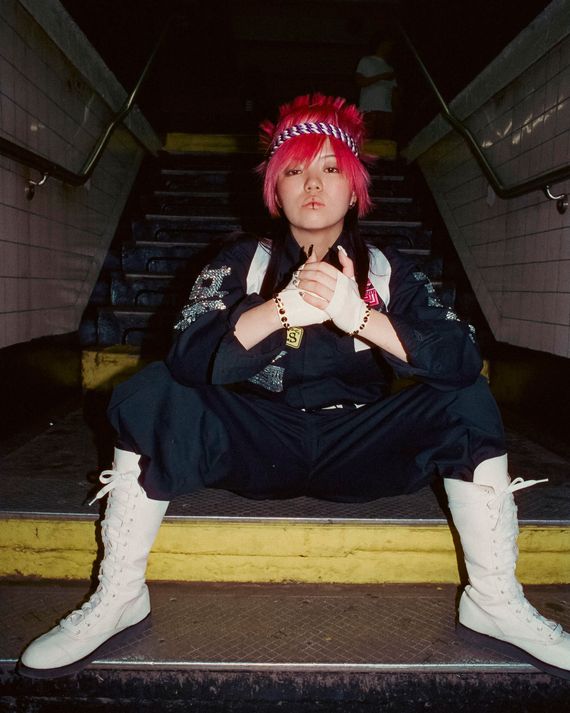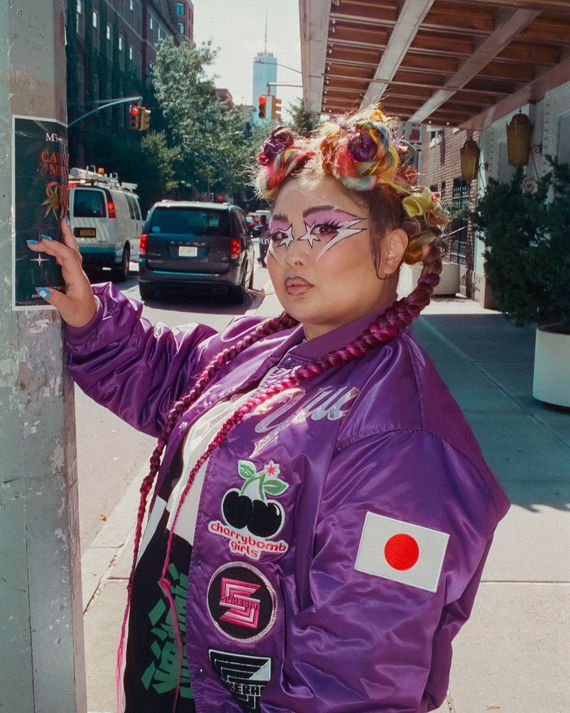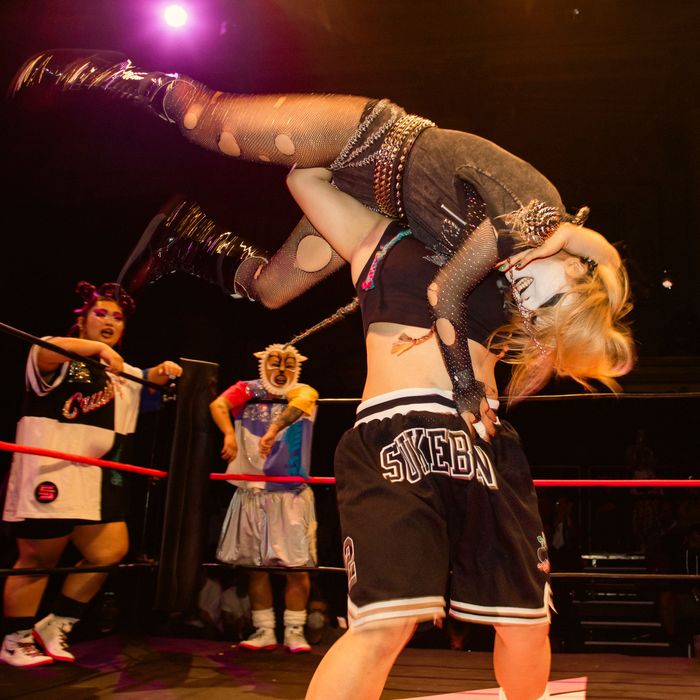
When Japanese wrestling legend Bull Nakano arrived in the United States in the early ’90s, the sport looked a lot different for women than it does today: Female athletes were often subject to hypersexualizing stereotypes, relegated to “bikini contests” rather than treated as serious competitors. But in Japan, Nakano was widely regarded as the most intimidating villain in women’s wrestling. Landing on the scene in 1983, she wore her hair spiked high and painted lightning bolts across her face; she executed daring moves — a guillotine leg drop from the top of a steel cage, for example — that matched her heavy-metal appearance. Nakano went on to wrestle in the U.S. between 1993 and 1995, before retiring from wrestling in 1997; her powerhouse persona helped change conceptions about what women’s wrestling could be. Now, the WWE Hall of Fame inductee has a new project: She’s set on bringing joshi puroresu (the Japanese term for women’s pro wrestling) to America through Sukeban, an all-female Japanese pro-wrestling league. “There’s a feeling that once you make it to the United States,” she says, “you’ve made it in your career.”
“These Japanese wrestlers are at the top of the game,” she adds of her Sukeban girls, “and deserve that opportunity.”
Named after Japanese school-girl gangs that emerged in the ’60s and ’70s, Sukeban blends sport and entertainment with the storytelling and high-flying moves that characterize joshi. A form of wrestling that tends to attract a younger, female-leaning fan base, joshi incorporates elements of fashion, anime, and art. The characters are fully fleshed out and typically fully clothed — there are “babyface” heroes, latex stray cats, the regal Lady Antoinette, and punk-rock villains — but the wrestling doesn’t take a backseat to appearances. Wrestlers deliver a high level of technical skill that relies on speed, flexibility, and acrobatics.
Sukeban made its American debut in New York on September 21, 2023 — the first time joshi appeared outside Japan. For the occasion, the old Bowery Savings Bank building transformed into a Japanese street festival, with vendors offering Sukeban merch alongside fairy floss, candy apples, and taiyaki, a fish-shaped waffle. The first match was a hit with the screaming audience, but Nakano says she could tell the wrestlers were still getting comfortable with each other (“not to mention that the audience they’re performing in front of is completely different,” she notes). But the New York match was just a warm-up for the league’s Art Basel Miami debut in December. There, at a skatepark under Interstate 95, the wrestlers started to find their rhythm.
“We really honed in on the characters and the entertainment side of things,” says Nakano. This included a high-fashion beauty and styling team, which dressed wrestlers in sailorlike uniforms and harlequin bloomer sets by Olympia Le-Tan, had nail artist Mei Kawajiri give them sparkly claw manicures, and enlisted makeup artist Isamaya Ffrench for their elaborate face paint. Such meticulous costuming, Nakano explains, “allows the wrestlers to feel more confident and feel like they are stars.” And Sukeban’s entrance into the American market was all about establishing the league as a phenomenon.
Now that they’ve achieved that first step, Nakano sees 2024 as the group’s defining year. Their next show takes place in Los Angeles in May, and they just signed two new competitors: Veny, Japan’s first openly trans wrestler, and Konami, recently released from a pro-wrestling contract in Tokyo. For Nakano, these new additions mean momentum. “It’s about climbing the ranks and continuing to push forward,” she says, offering a glimpse into the ambition that made her a force in the ring: “With Sukeban, we can take it further than the U.S. to get to the top of the world. I definitely have big dreams for it.”
Maya Mamushi
“In wrestling, you can build your own character. In Japan, my character is well-known and it’s all about the fight, but in America, a lot of people don’t know her so I can be far more expressive and have a wider range of personal characteristics. It’s about the performance. Also, the chants are a lot louder in the U.S., people don’t really scream in Japan. I used to watch WWE, so I’ve wanted to perform in America since the moment I debuted.”
Midnight Player
“Before I started wrestling, I’d never used makeup. Now, I love to wear costumes that really symbolize me and my character, not just in the way I perform but also in my life personally. It’s vital to feeling like myself. I was nervous for my first time in the ring in America, but I knew my purpose was the same as in Japan: appealing to the audience and creating an amazing event for them. But the feeling was completely different. People cheer so hard that it feels like they are part of the fight too. My favorite move, called the sling blade, is something I do in both countries. I first saw it when I used to watch Japanese pro wrestling when I was younger and it reminds me of why I got into wrestling.”
Crush Yuu
“The audience is a huge reason for my happiness within wrestling, and I love how expressive American audiences are. They don’t hold back. I don’t speak English well, but it’s almost as if none of that matters because my body does the communicating. When the audience is happy, I feel grateful for life. To prepare for a match, I do things I really enjoy that don’t bring my motivation down. Most of these have almost nothing to do with wrestling. I like to go to the beach to observe people and animals — literally anything to get my mind off what’s to come. But, once in the ring, my favorite move is the cannonball, because it shows off my power and speed.”


